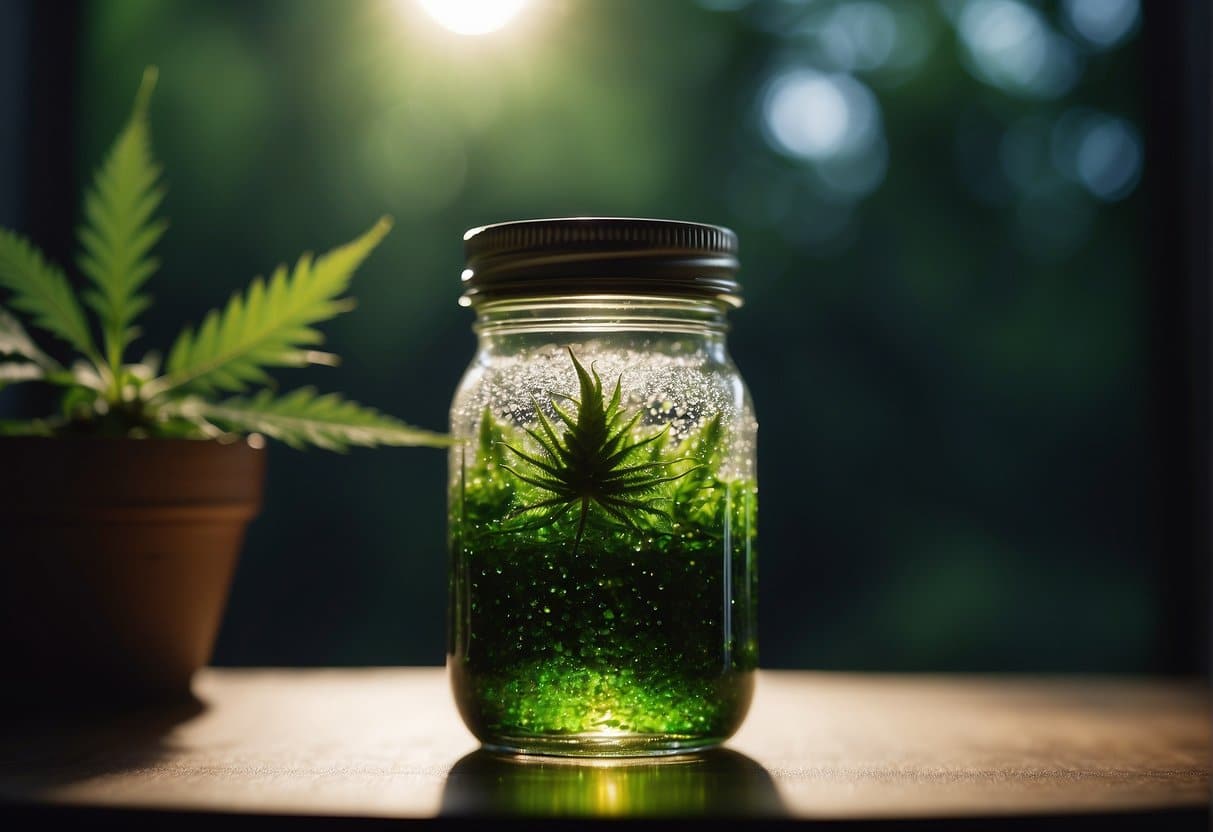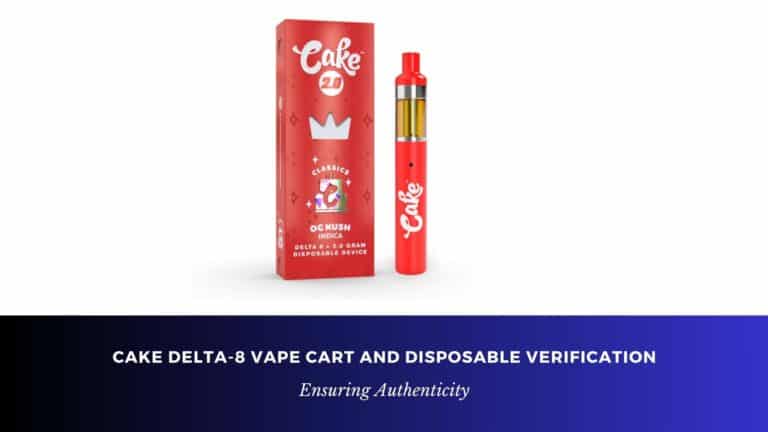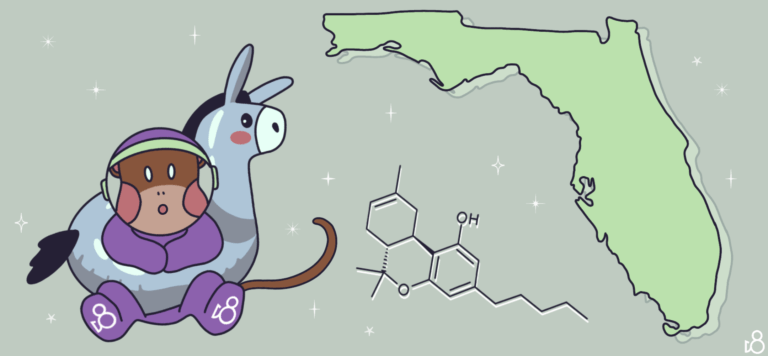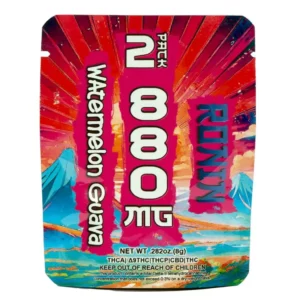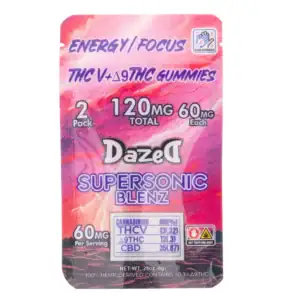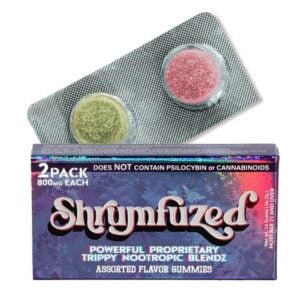How to Make THC Diamonds in a Mason Jar: A Step-by-Step Guide
Dive into the mystery of crafting **THC diamonds**, the crown jewels of weed extracts, with nothing but a jar in your own home! These sparkly beauties are jam-packed with THCa, THC’s cool cousin that springs into action once you heat it up. Picture yourself whipping up your own **potent** treasure, eclipsing even the finest stuff out there. It’s akin to discovering gold in your pantry. Hunting for the most knockout weed experience? This handbook is your golden ticket. Take the leap, and you’ll quickly get the knack for turning plain old buds into an awe-inspiring spectacle of strength that’ll blow your mind. Why call it quits now? You’re on the brink of conquering the ultimate peak of buzzes.
- Understanding THC Diamonds
- Preparation for Diamond Mining
- Extraction Process Overview
- The Crystallization Process
- Jar Tech Methodology
- Purging and Storage
- Quality and Purity Assessment
- Using THC Diamonds
- Advanced Techniques and Innovations
- Frequently Asked Questions
- What is the step-by-step guide to creating THC crystalline formations?
- Can you describe the potency levels of THC crystalline compared to other cannabis concentrates?
- What are the distinguishing characteristics of high-quality THC crystalline structures?
- How should one go about consuming THC crystalline for optimal effects?
- What important safety considerations should one keep in mind when attempting to make THC crystalline at home?
- What equipment and ingredients are essential for the DIY production of THC crystalline?
To start the process of making THC diamonds in a mason jar, you’ll need a cannabis extract like a butane hash oil (BHO) as your starting material. This extract is then introduced to a controlled environment within the mason jar to promote the formation of crystals. The clarity, potency, and purity of the resulting THC diamonds are determined by factors such as the quality of the starting material and the precision of your technique. It’s crucial to approach this process with caution and respect for safety guidelines, as it involves volatile substances and precise conditions.
Your ultimate goal is to facilitate the natural separation of THCa crystals from other plant compounds. By manipulating variables such as temperature, pressure, and time, you’ll encourage the crystalline structures to form and grow, resulting in the creation of your own THC diamonds. While this process may require patience and a bit of trial and error to perfect, the reward is a highly concentrated product that represents the essence of the cannabis plant’s psychoactive properties.
Understanding THC Diamonds
In the world of cannabis concentrates, THC diamonds represent the pinnacle of purity and potency. These crystalline structures are coveted for their high THC content and the unique experience they offer.
Chemical Structure of THC Diamonds
THC diamonds, scientifically known as THCa crystalline, represent the purest form of THCa available today. The chemical structure of THC diamonds is distinguished by its crystalline, nearly 100% THCa composition. When exposed to heat, THCa converts into THC – the active form that elicits psychoactive effects.
Difference Between THC and THCa
THC is the well-known psychoactive component of cannabis. In contrast, THCa (Tetrahydrocannabinolic acid) is a non-psychoactive precursor found in raw and live cannabis. While both belong to the cannabinoids family, THC exerts the “high,” whereas THCa has to transform into THC through decarboxylation, a process elicited by heat, to become psychoactive.
Significance of Cannabinoids
Cannabinoids like THC and THCa play a significant role in the effects that cannabis has on your body. Beyond the psychoactivity, they interact with your endocannabinoid system to influence various physiological processes. THC diamonds are essentially pure cannabinoids which allow for precise dosing and a clear understanding of their impact on your system.
The Role of Terpenes
While not a component of THC diamonds themselves, terpenes are aromatic compounds found in cannabis that contribute to the plant’s unique smell and flavor. They can also influence the effects of cannabinoids through a phenomenon known as the entourage effect. Though separate from THC diamonds, they are often reintroduced in the final concentrate to enhance the overall experience.
Preparation for Diamond Mining
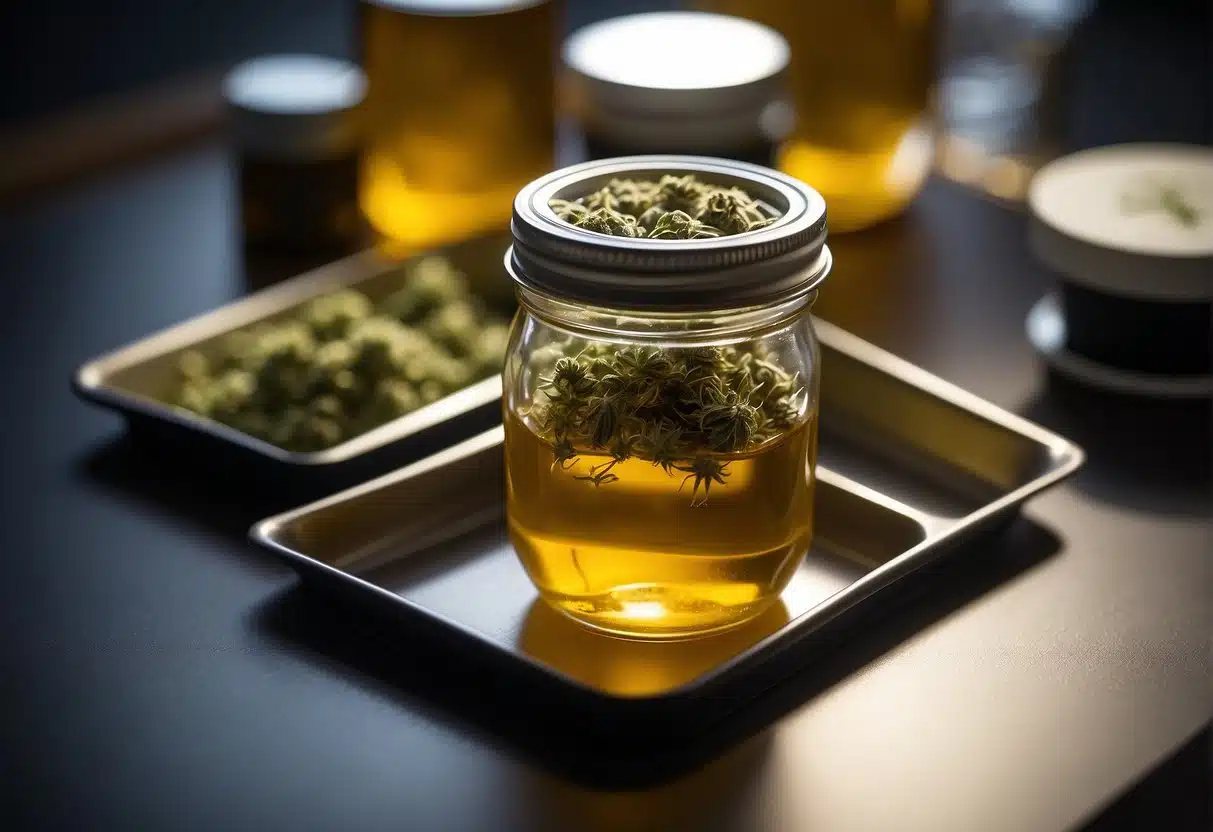
Before you start mining for THC diamonds, it is essential to understand the key components and considerations. You’ll need to select a high-quality starting material, familiarize yourself with the solvents required for extraction, and be aware of safety and legal considerations associated with the process.
Selecting the Starting Material
The first step in creating THC diamonds is to choose the starting material. This material should consist of high-quality, trichome-rich cannabis plants. The richer the trichomes, the more potent your final product will be. Quality matters, as it directly impacts the purity and the potency of the THC diamonds you aim to create.
Understanding the Solvents Used
Next, you need to be informed about the solvents used in diamond mining. Solvents such as butane or propane are typically utilized to extract the THC from the cannabis plant matter. It’s vital to use solvents that are pure and specifically designed for extraction to prevent contamination.
Safety and Legal Considerations
Safety is paramount when working with solvents due to their high flammability and potential health risks if mishandled. Also, there are significant legal considerations to keep in mind; the production of THC diamonds may be regulated or prohibited depending on your location. Ensure that you are fully compliant with local laws before proceeding with cannabis extraction.
Extraction Process Overview
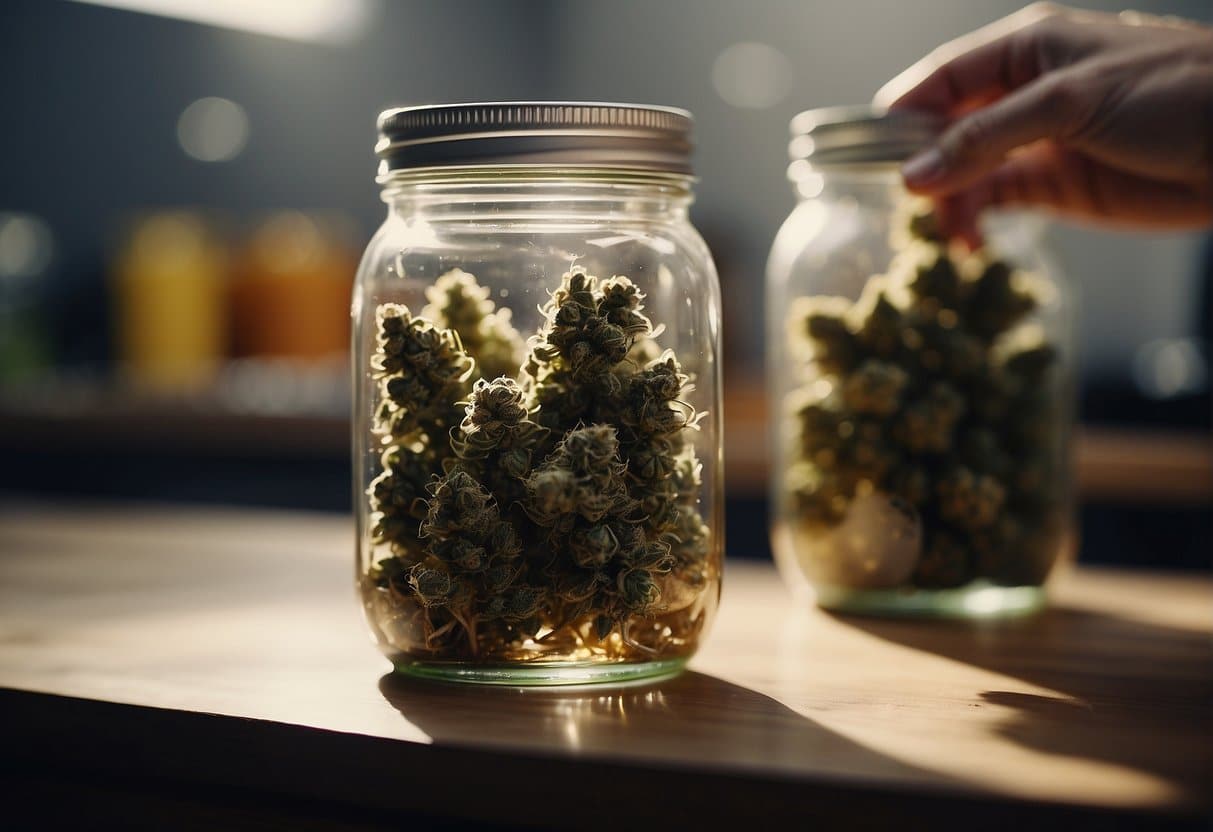
The creation of THCa diamonds through solvent-based extraction is an intricate process requiring precision and an understanding of chemistry. This overview outlines the essential steps from initial extraction using Butane Hash Oil (BHO) methodology to the final production of THCa crystals commonly known as “diamonds.”
Step-by-Step Extraction
First, you’ll need to gather your materials:
- High-quality cannabis plant material
- Butane as your solvent
- A closed-loop extraction system
- Mason jars for the later stages
For safety, this process should be performed in a well-ventilated area with no open flames or sparks, as butane is highly flammable.
Procedure:
- Prepare your Plant Material: Grind your cannabis to increase the surface area for better solvent contact.
- Run the Butane: Using your closed-loop system, pass butane through the cannabis material to extract the cannabinoids and terpenes.
- Evaporate the Butane: Allow the butane to evaporate, which will leave behind a cannabinoid-rich oil.
- Transfer: Move the concentrated extract into a mason jar to begin the crystallization process.
From BHO to THCa Crystals
Transforming your BHO into precious THCa diamonds involves careful manipulation of temperature and pressure:
- Secondary Purging: Gently heat the extract in a water bath to remove any remaining butane.
- Sealing the Jar: Ensure the mason jar is sealed correctly to create an ideal environment for crystallization.
- Crystallization Phase: Store your sealed jars in a cool, dark place where the THCa can slowly precipitate out of the solution, forming crystals at the bottom of the jar.
- Patience: This can take several weeks. You’re looking for the formation of solid, geometric crystals which indicate successful THCa crystallization.
By methodically following each step and paying attention to detail, you can extract potent THCa crystals from cannabis using butane and safely transfer them into a mason jar for the final crystallization phase.
The Crystallization Process
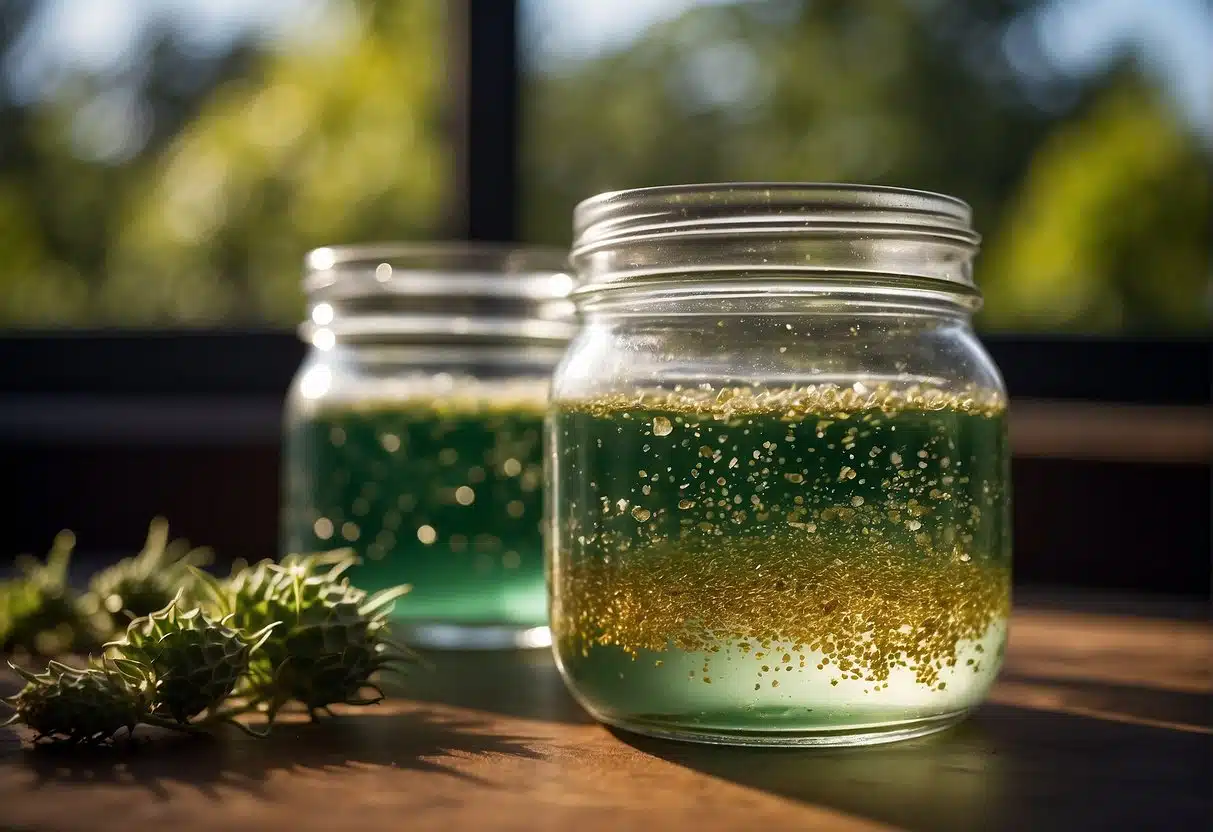
Creating THC diamonds, a potent form of cannabis concentrate, involves a delicate crystallization process within a mason jar, where managing temperature and pressure is key to forming pure crystalline structures.
Creating the Ideal Environment
You’ll need a controlled environment to initiate the crystallization of THC. Stability is crucial; any fluctuations in your setup can impede the formation of crystals. Ensure your mason jar is clean and free of contaminants before sealing the cannabis extract inside.
Temperature and Pressure Factors
Adjust the temperature and pressure carefully. Lower temperatures tend to facilitate the formation of THC diamonds, but too low can halt the process. Pressure needs to be high initially to dissolve the cannabinoids, then gradually reduced to allow crystals to form.
Temperature Guide:
- Initial Phase: Keep above the dew point to avoid moisture.
- Crystallization Phase: Maintain at a consistent lower range conducive to crystal growth.
Monitoring Crystalline Structures
Regularly observe your mason jar for the formation of crystalline structures. They should appear as solid, geometric forms and may vary in size. If you notice any irregularities, adjust the temperature or pressure slightly to correct the course of crystallization.
Jar Tech Methodology
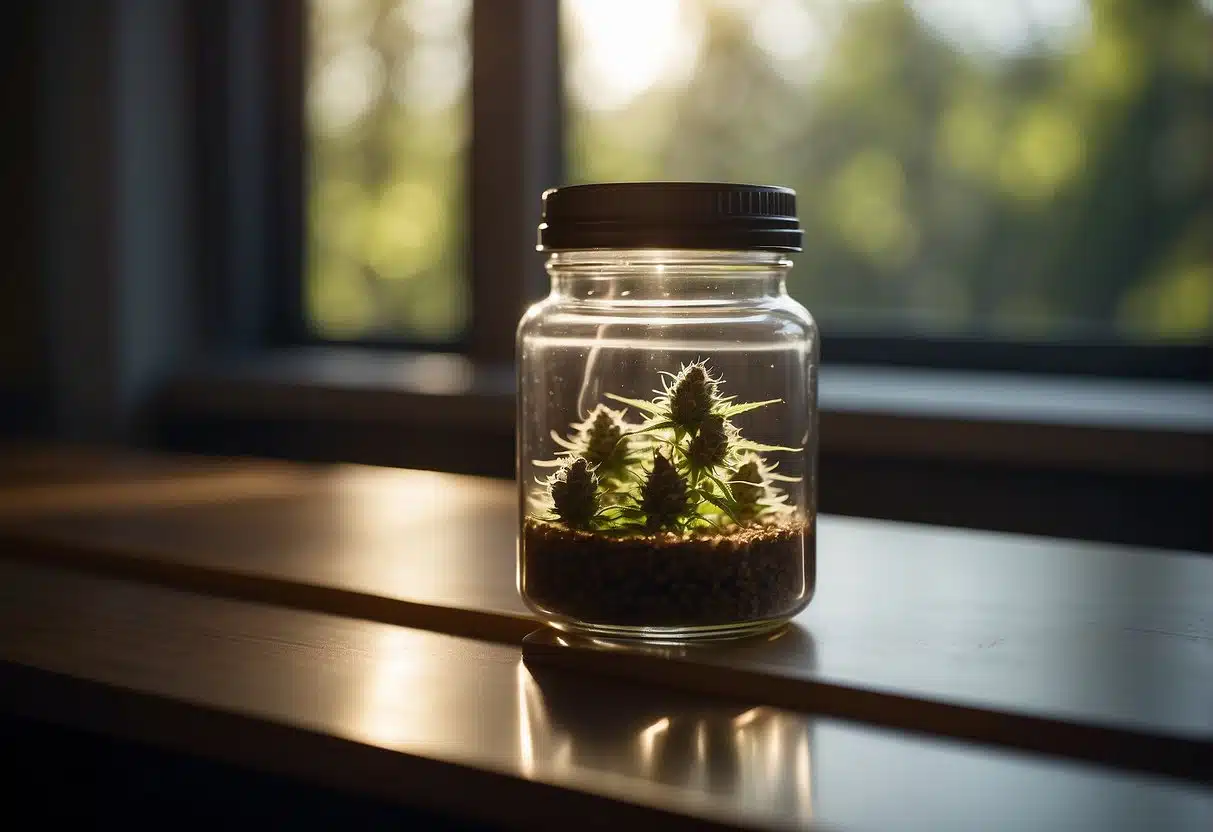
In the intricate process of making THC diamonds, the Jar Tech methodology is a pivotal technique that leverages the stability and predictability of a mason jar environment to induce nucleation and crystal growth.
Setting Up the Mason Jar
To begin, ensure you have a clean, sterilized mason jar, which will serve as your crystallization chamber. Properly preparing your mason jar involves adding your cannabis extract, typically in the form of a solvent-based solution, into the jar. Seal it tightly to create an airtight environment, crucial for consistent pressure during the nucleation phase.
Understanding Jar Tech
Understanding Jar Tech is fundamental to success. This technique relies on manipulating variables such as temperature, pressure, and solvent saturation to promote the formation of THC diamonds. Your mason jar acts as a micro-environment where these conditions can be monitored and adjusted as needed to optimize crystallization.
Nucleation and Growth
Nucleation is the initial stage where THC molecules begin to cluster into a crystalline form. This can be achieved by carefully managing the saturation levels in the solution inside your mason jar. Once nucleation occurs, maintaining a stable environment within the jar is crucial for the growth phase, allowing the nucleation points to develop into larger, well-formed THC diamonds. Regular observation and patience are key as this process can take several weeks to complete.
Purging and Storage
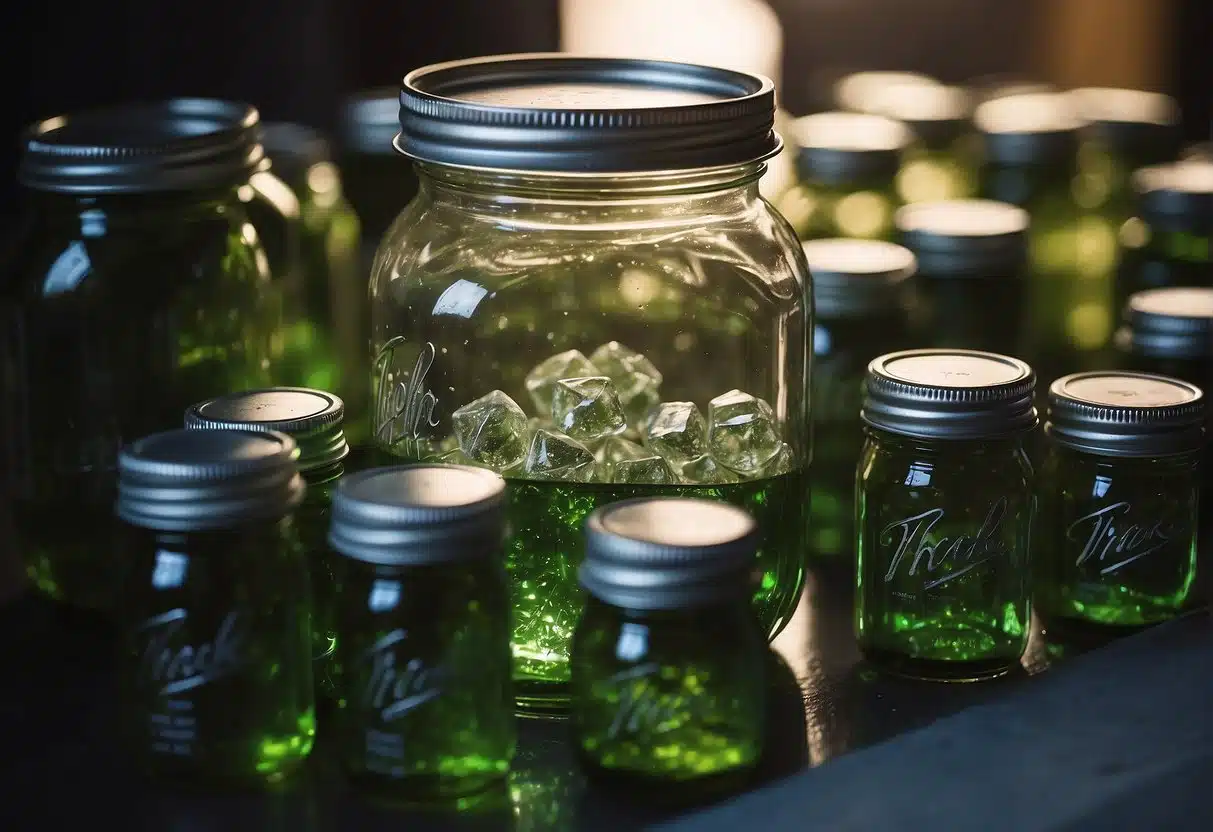
When making THC diamonds in a mason jar, a meticulous purging process is crucial to eliminate residual solvents, and adopting optimal storage techniques is key to preserving potency and purity.
The Purging Process
After you’ve successfully created your THC crystal solution, the next vital step is purging. This is done to remove any residual solvents that might be harmful if consumed. To do this effectively, you will need a vacuum oven. Place your mason jar with the extracted solution into the oven and set it at the recommended temperature. A consistent temperature is imperative to ensure all solvents are evaporated without degrading the THC potency. Maintain this process until all of the solvents are completely eliminated, which could take several hours depending on the quantity and solvent used.
Optimal Storage Techniques
Once your THC diamonds have been properly purged, storing them correctly is critical to maintaining their integrity. Keep your crystals in a cool, dark place, as prolonged exposure to light and heat can degrade both the flavor and psychoactive properties. For long-term storage, ensure your mason jar is airtight to prevent moisture from getting in, which can spoil your product. Additionally, consider using opaque containers to minimize light exposure. Store your container in a stable environment with a consistent temperature to preserve the diamonds’ quality.
Quality and Purity Assessment
When creating THC diamonds, it is crucial to assess the quality and purity of your product. This ensures the safety and effectiveness of the diamonds you produce. Purity is determined by the absence of unwanted chemicals, while potency is a measure of the concentration of THC. The terpene profile contributes to the flavor and aroma, and also enhances the overall experience.
Testing for Purity
To ensure the purity of your THC diamonds, you should employ chromatography tests. These tests separate and analyze the compounds in your extract, identifying any contaminants. Specifically, gas chromatography (GC) is a common method to test:
- Residual solvents: which must be absent to consider the extract pure.
- Pesticides: which should be non-detectable for consumer safety.
Here’s a basic outline of a chromatography test results table you might encounter:
| Compound Tested | Acceptable Limits | Test Results |
|---|---|---|
| Solvents | 0 ppm | 0 ppm |
| Pesticides | 0 ppm | 0 ppm |
Identifying Potency and Terpene Profile
The potency of your THC diamonds is crucial; it indicates how much THC is present in your product. It’s measured in a percentage by weight. High-potency diamonds are often more desirable and effective for experienced users.
In addition to potency, the terpene profile is analyzed to identify the scent and flavor characteristics of the diamonds. Terpenes can influence the effect of the THC, contributing to the entourage effect. High-performance liquid chromatography (HPLC) is a typical method used to measure both potency and the terpene profile. A readout might look like this:
- Total THC: 99.9%
- Terpenes: Myrcene – 0.5%, Limonene – 0.3%
Be sure to rely on accredited testing facilities to conduct these assessments for reliable results.
Using THC Diamonds
THC Diamonds, known for their purity and high concentrations of THC, are a connoisseur’s choice for a potent cannabis experience. These crystalline structures, often combined with terpene-rich sauce, offer a versatile range of consumption methods tailored to your preference.
Dabbing and Vaping Techniques
When it comes to using THC diamonds, dabbing is a popular method that delivers an intense effect. To dab THC diamonds:
- Preheat your dab rig’s nail to the appropriate temperature, typically between 350-450°F (177-232°C) for optimal flavor and vaporization.
- Use a dab tool to carefully place a small amount of THC diamond onto the nail.
- Inhale slowly as the diamond melts and produces vapor.
For vaping:
- Ensure your vape pen is designed for concentrates and follow the device-specific instructions to load the THC diamonds.
- Opt for pens with temperature control settings to enhance your vaping experience by preserving the diamonds’ terpene profiles.
Other Consumption Methods
Beyond dabbing and vaping, THC diamonds can be incorporated into edibles. However, they must be decarboxylated first to activate the THC. To use THC diamonds in edibles:
- Lightly heat your diamonds until they dissolve into a carrier oil like coconut or MCT oil.
- Mix the infused oil into your edible recipes for a potent treat.
Remember, when ingesting edibles, start with a small dose and wait to understand the full effects before consuming more.
For a non-inhalation method that still offers quick onset, consider adding decarboxylated THC diamonds sublingually, directly under your tongue. This allows for relatively fast absorption into the bloodstream.
Advanced Techniques and Innovations
In the evolving landscape of cannabinoid synthesis, advanced techniques and innovations in THC diamond production have revolutionized the potency and purity of the final product. You will explore state-of-the-art recrystallization methods and the latest trends that are setting new standards in the industry.
Recrystallization Methods
Recrystallization is a critical step in purifying your THC to form diamonds, which are the crystalline structures of THCa. By using a combination of solvent, typically butane or propane, and precise temperature control, you can gradually promote the formation of these ultra-pure crystals. The process begins with dissolving your cannabis extract in the chosen solvent within a mason jar. Temperature is meticulously lowered, usually via a cooling system or by placing the jar in a cold environment, to initiate diamond formation.
Emerging Trends in THC Diamond Productions
The THC diamond production scene is witnessing a surge in innovative techniques aiming to optimize yield and quality. Closed-loop systems, though complex, are becoming more accessible to enthusiasts and professionals alike, ensuring safety and efficiency. Meanwhile, leveraging scientific instrumentation, such as rotary evaporators, enables more controlled solvent removal, which is key to achieving the desired purity and size of THC diamonds. As you delve into these methods, it’s essential to adhere to safety guidelines due to the volatile nature of the solvents involved.
Frequently Asked Questions
When seeking to create THC diamonds, you’ll need precise information on procedures, potency, characteristics, consumption methods, safety, and necessary materials. This section provides answers to common inquiries.
What is the step-by-step guide to creating THC crystalline formations?
Creating THC crystalline involves a solvent-based extraction followed by a purification process to form crystals. You’ll typically dissolve cannabis extract in a solvent, introduce a temperature change, and allow the THCa crystals to form and separate from the liquid.
Can you describe the potency levels of THC crystalline compared to other cannabis concentrates?
THC crystalline is considered one of the most potent forms of cannabis concentrates. While typical concentrates range from 50% to 80% THC, crystalline can reach purities of over 99%.
What are the distinguishing characteristics of high-quality THC crystalline structures?
High-quality THC crystalline structures are clear or slightly amber, indicating purity, with a consistency that resembles coarse sugar. They should be free from any residual solvents and contaminants.
How should one go about consuming THC crystalline for optimal effects?
To enjoy THC crystalline, it can be vaporized using a dab rig or incorporated into edibles. The high potency means you should start with a very small amount to gauge its effects before consuming more.
What important safety considerations should one keep in mind when attempting to make THC crystalline at home?
Safety is paramount when making THC crystalline. It requires the use of highly flammable solvents and can produce dangerous fumes. It’s crucial to work in a well-ventilated area, follow safety protocols, and consider leaving it to professionals.
What equipment and ingredients are essential for the DIY production of THC crystalline?
To produce THC crystalline, you will need cannabis extract, a solvent like butane or ethanol, a mason jar for the initial mixture, filters, and a vacuum oven for purging any solvent residues after crystal formation. Precision and care in following instructions are essential.

